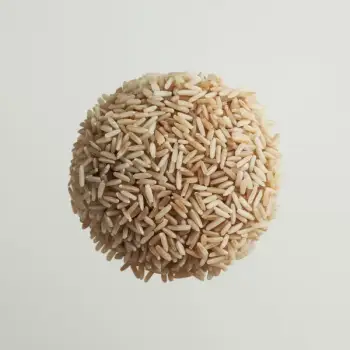


Sprouted
Brown rice that has been soaked and allowed to germinate, which may enhance digestibility and nutritional value.
Whole grain
Unprocessed brown rice with the outer hull removed, retaining the bran and germ layers, which provide a nutty flavor and chewy texture.
Instant or quick-cooking
Pre-cooked and dehydrated brown rice that cooks in a fraction of the time, suitable for those with limited time.
Short, medium, and long grain
Brown rice varieties that differ in size and texture. Short grain is plump and sticky when cooked, medium grain is slightly chewy, and long grain is light and fluffy.




Instant brown rice: Uncle Ben's
Sprouted brown rice: TruRoots
Whole grain brown rice: Lundberg Family Farms

Boiling: The most straightforward method, boiling involves cooking brown rice in a large amount of water and then draining off the excess once the rice is cooked. This can result in a lighter, fluffier texture.
Pilaf Method: This technique starts with sautéing the rice in oil or butter to lightly toast the grains, then adding liquid and cooking it covered. The pilaf method enhances the nutty flavor of brown rice.
Pressure Cooking: Using a pressure cooker can significantly reduce the cooking time of brown rice while yielding a consistent texture. Follow the manufacturer's instructions for the correct water-to-rice ratio and cooking time.



